The aurora borealis, also known as the Northern Lights, is a natural light display that occurs in the Northern Hemisphere and has always been a source of inspiration and wonder for people around the world.
From the ancient Greeks to the indigenous peoples of the Arctic, people have been drawn to the beauty and mystery of the aurora borealis. It is like a dance of light, a symphony of colors, a masterpiece of nature.
What is the aurora borealis?
It is caused by the interaction of charged particles from the sun with the Earth’s atmosphere. When these particles enter the Earth’s atmosphere, they collide with atoms and molecules, causing them to emit light. The color of the light depends on the type of atom or molecule that is hit and the altitude at which the collision occurs. The Northern Lights are typically seen as a faint green or yellowish glow, but can also appear in shades of red, pink, purple, and even blue.
Where and when to see Northern Lights?
The Northern Lights are most commonly observed in the high-latitude regions of the Northern Hemisphere, such as the Arctic Circle and subarctic regions. This includes countries like Canada, Alaska, Russia, Sweden, Finland, and Norway. In these locations, the Northern Lights can often be seen during the fall, winter, and spring months, when the nights are long and dark. The best time to see the aurora borealis is typically around midnight, when the sky is at its darkest.
To get the best view of the Northern Lights, it is important to find a location with a clear view of the sky and little light pollution. This means finding a location away from city lights and other sources of artificial light. It is also helpful to check the weather forecast, as cloud cover can obscure the view of the aurora borealis.
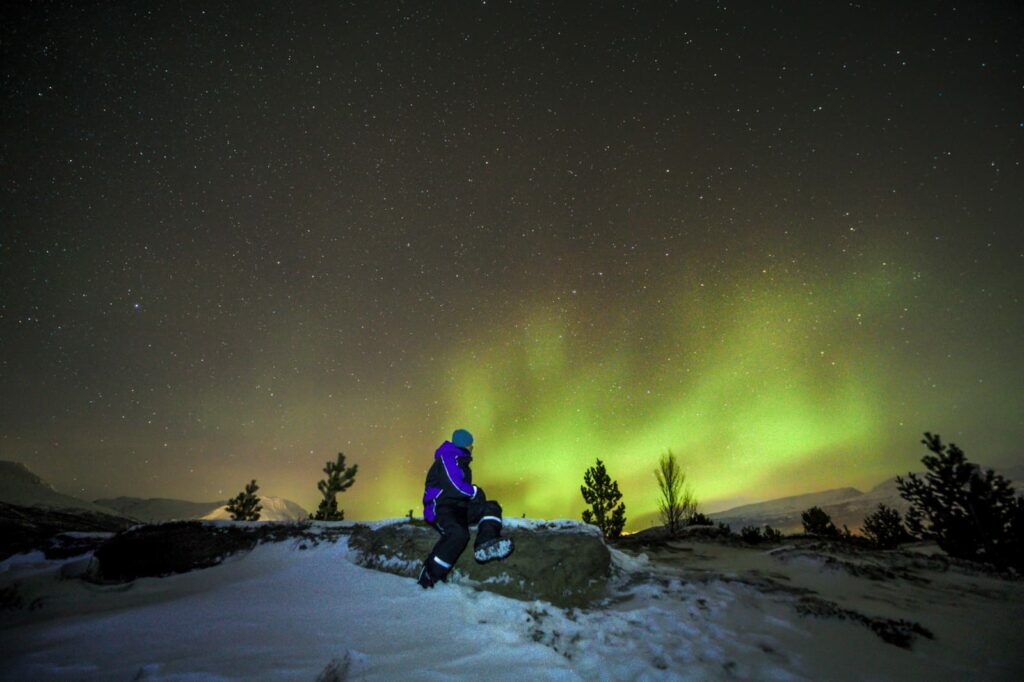
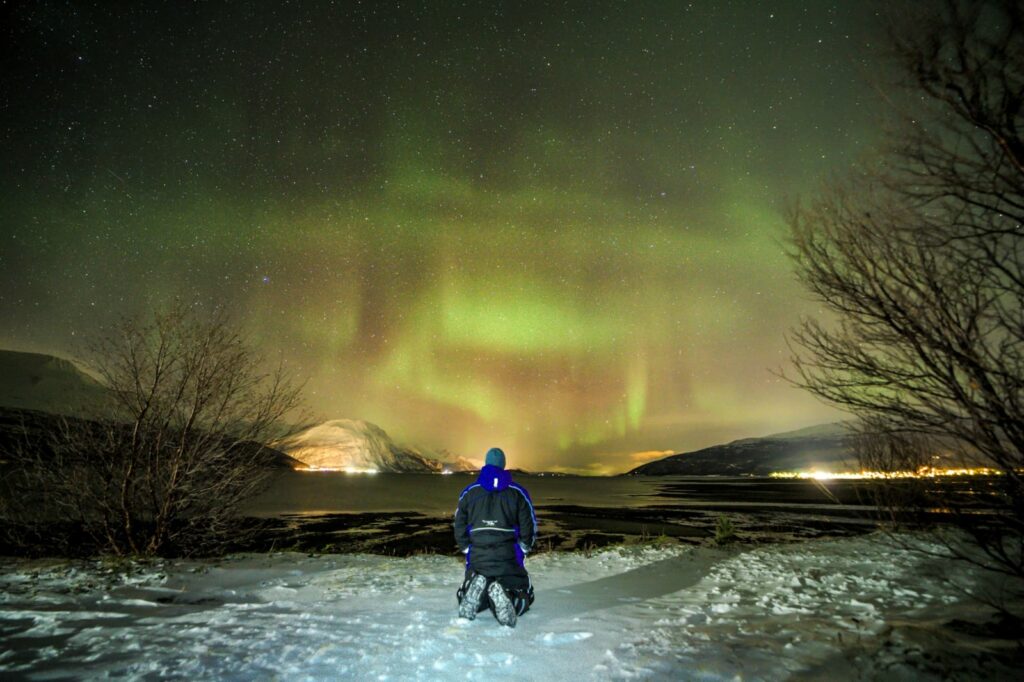
I recommend the following resources to plan your night expedition:
- Clear Outside: This website (and smartphone app) is by far the the most reliable weather source I’ve ever tried. It’s made for astronomers and as such shows not only the total clouds cover forecast, but also splits that forecast into low, medium and high altitude clouds.
Highly recommended as your weather app even if you’re not interested in Northern Lights or astronomy. - The Aurora forecast from NOAA. It provides a 30 to 90 minute forecast of the location and intensity of the aurora, with animation on a map.
- The auroral forecast from SpaceWeatherLive, which uses the same data as the above forecast from NOOA. It show the same maps (without animation) and also a list of cities with the probability that you’ll be able to see lights from each of those places.
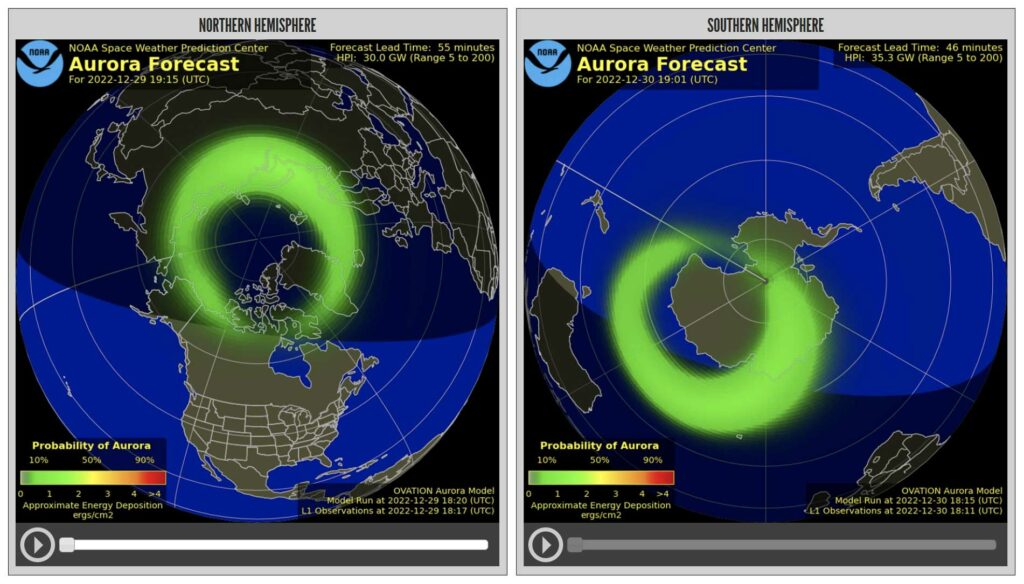
How to photograph Northern Lights?
Pictures of the Northern Lights can be taken with any camera and modern smartphone will certainly give decent results, but as always, professional gear and proper technique will improve the result.
If you are interested in capturing Northern Lights photos of the highest quality, it is important to have a camera with manual settings and a wide-angle lens. A tripod is also essential, as it will help you keep the camera steady and capture clear, sharp images.
Here are some general DSLR camera settings that you can use to photograph the Northern Lights:
- Set your aperture to f/2.8 or lower: A lower aperture (also known as a wider aperture) will allow more light to enter the camera, which is important when photographing the Northern Lights in low light conditions.
- Use a high ISO setting: A high ISO setting will allow you to capture more light and detail in your photograph. However, be aware that using a high ISO can also introduce noise (graininess) into your image, so it is important to find a balance between getting enough light and maintaining image quality.
- Set your shutter speed to 15-30 seconds: A longer shutter speed will allow more light to enter the camera and will give you the opportunity to capture the movement of the Northern Lights. However, be aware that using a long shutter speed will also increase the risk of camera shake, so it is important to use a tripod to keep the camera steady.
- Use manual focus: In low light conditions, it can be difficult for the camera’s autofocus system to accurately focus on the Northern Lights. To ensure that your images are sharp, it is a good idea to switch to manual focus and focus on a distant light or object in the sky.
- Experiment with different white balance settings: The Northern Lights can appear in a range of colors, from green and yellow to red and purple. Experimenting with different white balance settings can help you capture the true color of the aurora borealis in your photographs.
These are just general settings and the specific settings you use will depend on the conditions and your personal preference. It is always a good idea to experiment with different settings and techniques to find what works best for you and the conditions you are working with.
In addition to the proper equipment, it is important to have a plan in place for what you want to photograph and how you want to compose your shots. This can help you make the most of your time and get the best photographs possible.
Finally, be patient and be prepared to wait for the perfect shot. The aurora borealis can be a fickle subject, and it may take some time for the lights to appear or for the conditions to be just right for a great photograph. It is also a good idea to dress warmly and be prepared for cold weather, as observing and photographing the Northern Lights can often involve standing outside for extended periods of time.
A magical show
The aurora borealis is a beautiful and awe-inspiring natural light display that can be observed and photographed in the high-latitude regions of the Northern Hemisphere during the fall, winter, and spring months.
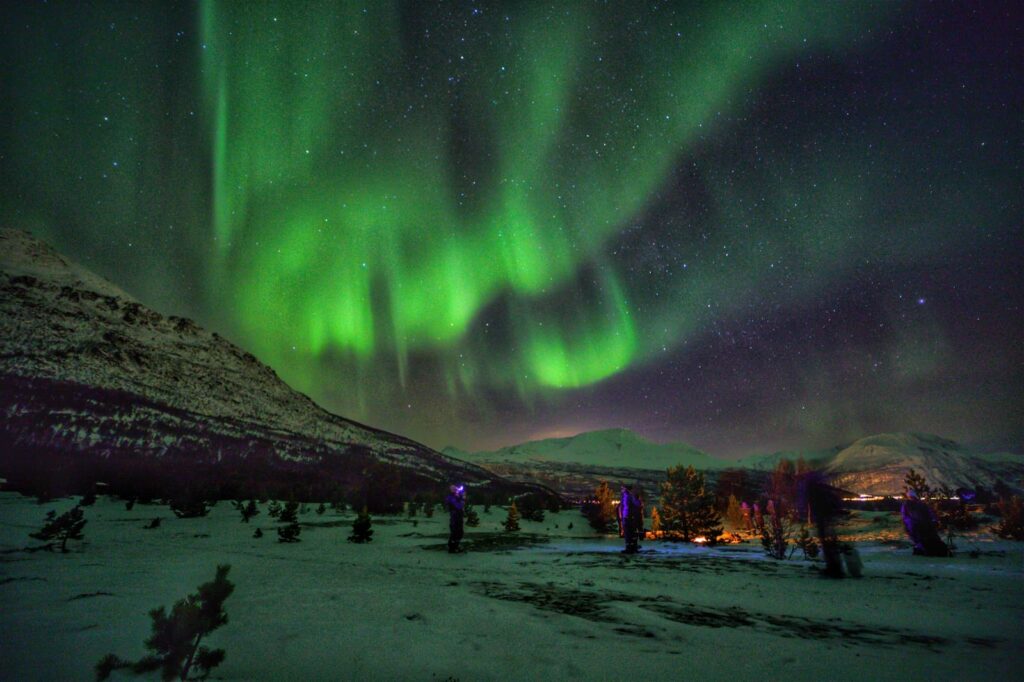
To get the best view and photographs, it is important to find a location with a clear view of the sky and little light pollution, have the right equipment and a plan in place, and be patient and prepared for cold weather.
With a little planning and preparation, you can experience and capture the magic of the Northern Lights.
Have you ever had the chance to witness this beautiful natural display?
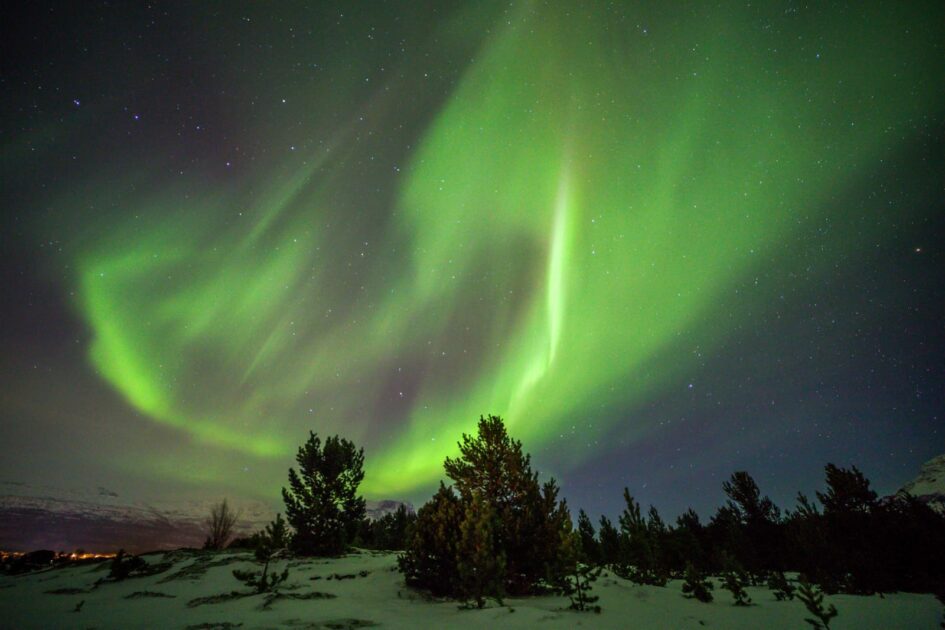
Leave a Reply